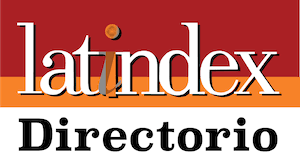Criminal typologies that affect banks in the concealment of illegal activities
DOI:
https://doi.org/10.56368/Entrelineas212Keywords:
criminal typologies, financial institutions, crime prevention, FATFAbstract
The Panamanian banking sector has been used in money laundering schemes because the country is an attractive financial center for criminal activity. The banking system adopted substantial changes in its risk-based approach methodology as of 2014, because of pressure from correspondents. As of Law 23 of April 27, 2015, the prevention regime was adopting criteria attached to the legal duty of the Law and the norms issued by the Superintendency of Banks of Panama, called Anti-Laundering Regime, as a further step towards the constitution of a legal structure that meets the needs of control and protection of the system. In order to identify the criminal typologies that affect banking at the national level, due to the external and internal threats used in the concealment of illegal activities, a documentary investigation has been prepared on the subject, detecting that the three most used in this Scheme in national banking are structuring or smurfing, electronic transfers and correspondent banking, as well as that it is difficult to trace the root of a transaction resulting from structuring, so it is necessary to delve into the study of typologies so that the authorities have information that facilitates improving prevention systems, as well as knowing the operational channels of criminals.
Downloads
References
Association of Certified Anti-Money Laundering Specialists ACAMS. (2015). ACAMS 14th Annual AML & Financial Crime Conference. https://www.acams.org/es/news/14th-annual-anti-money-laundering-and-financial-crime-conference-to-address-global-fin ancial-crime-threats.
Cano, M. & Lugo, D. (2004). Auditoria forense en la investigación criminal del lavado de dinero y activos. Ediciones Ecoe.
Comisión Nacional Contra el Blanqueo de Capitales, Financiamiento del Terrorismo y Financiamiento de la Proliferación de Armas de Destrucción Masiva. (2017). Estrategia nacional para la lucha contra el blanqueo de capitales, el financiamiento del terrorismo y de la proliferación de armas de destrucción masiva. Fondo Monetario Internacional.
Decreto de Gabinete N° 238 de 1970. Por el cual se reforma el régimen bancario y se crea la comisión bancaria nacional. Gaceta oficial de la República de Panamá. Panamá, 6 de julio de 1970. En: https://docs.panama.justia.com/federales/decretos-de-gabinete/decreto-de-gabinete-238-de-1970-jul-6-1970.pdf
Decreto Ejecutivo 163 de 2000. Se reforma el decreto nº 136 de 9 de junio de 1995 y se crea la unidad de análisis financiero, para la prevención del blanqueo de capitales, tal como se define este delito en el código penal. Decreto Ejecutivo. Asamblea Legislativa de Panamá. En: https://www.organojudicial.gob.pa/uploads/wp_repo/blogs.dir/cendoj/BLANQUEODECAPITALESTERRORISMO/decreto_ejecutivo_163_2000.pdf
Federación Latinoamericana de Bancos, FELABAN. (2016). Tipologías. https://www.felaban.net/coplaft/tipologias
Filipkowski, W. (2008). Cyber laundering: an analysis of typology and techniques. International Journal of Criminal Justice Sciences (IJCJS), 3(1), 15–27. En: https://www.researchgate.net/publication/222099776_Cyber_Laundering_An_Analysis_of_Typology_and_Techniques
GAFI (2018). Recomendación 13: banca corresponsal. 40 recomendaciones del GAFI. En: https://www.cfatf-gafic.org/es/documentos/gafi40-recomendaciones/419-fatf-recomendacion-13-banca-corresponsal
Gascoigne, C. (2012). GFI Praises FATF Tax Evasion Crackdown, Disappointed in Failure to Address Anonymous Shell Companies. https://gfintegrity.org/press/page/35/
Grajales, J. (2016). Inteligencia financiera y recuperación de activos. CICAD.
Grupo de Acción Financiera de Latinoamérica, GAFILAT. (2018a). Ejercicio Bienal: casos y tipologías regionales 2017-2018 [Honduras]. Unidad de Análisis Financiero y Económico.
Grupo de Acción Financiera de Latinoamérica, GAFILAT. (2018b). Informe de evaluación mutua de la República de Panamá. GAFILAT.
Jiménez Sanz, C. (2009). El blanqueo de capitales [Tesis Doctoral]. Universidad Rey Juan Carlos.
Juape P, M (2014). El “pitufeo” es el lavado que predomina en las microfinanzas. Gestión. https://archivo.gestion.pe/economia/pitufeo-lavado-que-predomina-microfinanzas-2098761
Kantz, A. (2019). The cost of dirty money. In Bloomberg. https://www.bloomberg.com/graphics/2019-dirty-money/
Ley N° 23, Que adopta medidas para prevenir el blanqueo de capitales, el financiamiento del terrorismo y el financiamiento de la proliferación de armas de destrucción masiva, y dicta otras disposiciones (2015). Gaceta Oficial de la República de Panamá, Panamá, 27 de abril de 2015. En: https://www.gacetaoficial.gob.pa/pdfTemp/27768_B/50545.pdf
Ley N° 42, Que establece medidas para la prevención del delito de blanqueo de capitales. (2000). Gaceta Oficial de la República de Panamá, Panamá, 2 de octubre de 2000.
Martínez, J.C. (2015). El delito de blanqueo de capitales [Tesis Doctoral]. Universidad Complutense de Madrid.
Oficina de las Naciones Unidas contra la Droga y el Delito UNODC. (2005). Riesgo de lavado de activos en instrumentos financieros, usuarios y empleados de instituciones financieras. UNODC.
Patel, H. & Thakkar, B.S. (2012). Money laundering among globalized worlds. In Approaches to Diversity. InTech.
Ragués i Vallès, R. (2008). La responsabilidad penal del testaferro en delitos cometidos a través de sociedades mercantiles: problemas de imputación subjetiva. InDret, Revista para el Análisis del Derecho, 3, 1-28. En: https://indret.com/wp-content/themes/indret/pdf/553.pdf
Sarıgül, H. (2013). Money laundering and abuse of the financial system. International Journal of Business and Management Studies, 2(1), 287-301. En: https://www.researchgate.net/publication/256040462_Money_Laundering_and_Abuse_of_the_Financial_System
Servicio Ejecutivo de la Comisión de Prevención del Blanqueo de Capitales e Infracciones Monetarias (SEPBLAC). (2014). Tipologías de blanqueo de capitales. https://www.prevencionblanqueo.com/wp-content/uploads /2014/02/informe_sobre_tipologias.pdf
Unidad de análisis financiero (UAF) (2017). Estudio de tipologías relacionadas al lavado de dinero en república dominicana basadas en sentencias (2007-2015).
Unidad de información y análisis financiero (UIAF) (2014). Plan estratégico unidad de información y análisis financiero - UIAF vigencia 2014-2018. https://uiaf.gov.co/sites/default/files/2022-07/documentos/archivos-anexos/Plan%20estrategico%202014-2018.pdf
Welling, S.N. (1989). Smurfs, Money Laundering and the Federal Criminal Law: The Crime of Structuring Transactions. Law Faculty Publications, 287-343. https://uknowledge.uky.edu/cgi/viewcontent.cgi?article=1327&context=law_facpub
Downloads
Published
Issue
Section
License

This work is licensed under a Creative Commons Attribution-NonCommercial 4.0 International License.
You are free to:
- Share — copy and redistribute the material in any medium or format
- Adapt — remix, transform, and build upon the material
- The licensor cannot revoke these freedoms as long as you follow the license terms.
Under the following terms:
- Attribution — You must give appropriate credit , provide a link to the license, and indicate if changes were made . You may do so in any reasonable manner, but not in any way that suggests the licensor endorses you or your use.
- NonCommercial — You may not use the material for commercial purposes .
- No additional restrictions — You may not apply legal terms or technological measures that legally restrict others from doing anything the license permits.









